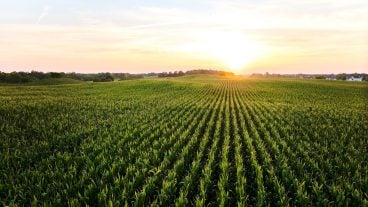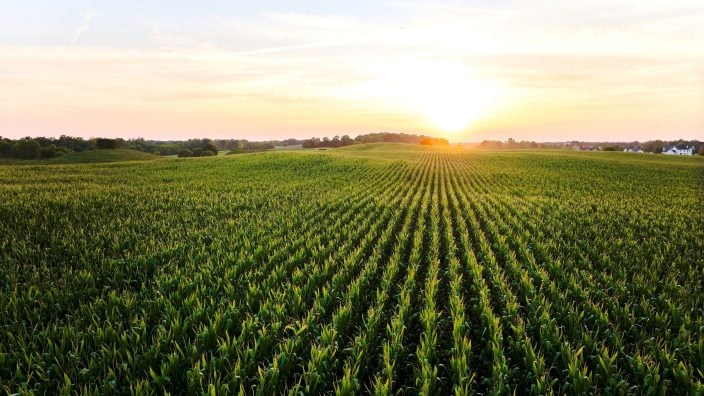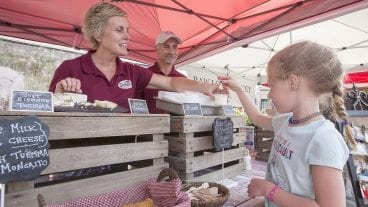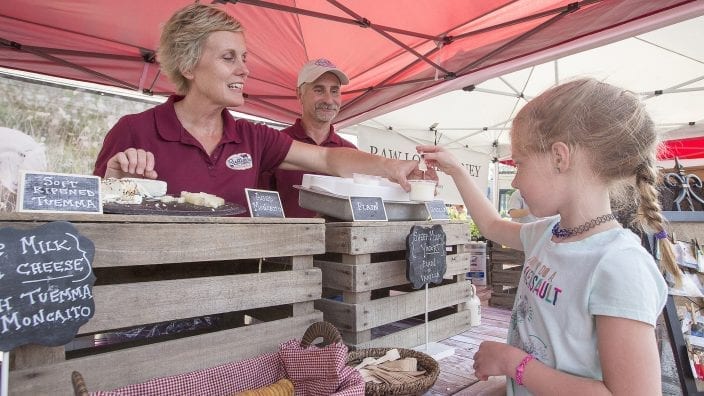Farmer’s Guide to Trucking Regulations available to Ohio Farm Bureau members
The guide includes a farm driver checklist, overview of state and federal regulations and exemptions, CDL qualifications and more.
Read More
Hello, everyone. Spring is my favorite time of year with seed shopping for our home garden.
I look forward to browsing all the seed catalogs each spring to find new things to grow or updated varieties. I’ve even spread the seed catalog disease to my wife as she enjoys looking through them just as much as I do.
I’d like to share with you our gardening experience since moving to Ohio and how we rely on seed genetics and the local resources to make the most of our garden. Gardening is a yearly experiment, so if you fail the first year, don’t give up — try something new.
For many years, our garden planning included a chance encounter with a seed display at a box store while we were shopping for plumbing parts. As it turns out, this was the perfect to get our first home garden off the ground at our first house. We didn’t invest too much time, or money and we learned quickly what would grow well in the soil on our quarter-acre lot in Maine.
Over the years, we kept mental track of the varieties that did well, or we kept a stack of old seed packets so we wouldn’t forget. By the time we left Maine, our garden was very productive and amazed us at how much we could grow in such a small plot.
When we moved to Ohio, we had to start that learning process all over again. The soils here in Trumbull County are much different than the gravel / sand soils of central Maine. Our old varieties that we loved didn’t do well, and the disease pressure here is much higher than we encountered previously.
So out came the seed catalogs.
Our first Ohio garden was OK but not thriving, and this was due to a host of diseases — powdery mildew, early and late blight, bacterial wilt, and a few others. When we started planning for our second Ohio garden, our first priority was to get disease-resistant varieties.
Powdery mildew-resistant varieties made a huge difference for our several varieties of squash, pumpkins, zucchini, summer squash and cucumbers. If you’ve ever had a zucchini plant produce until mid-July before turning a dull white color as if it had been dusted with flour and then die, you know the challenge of controlling powdery mildew.
The difference between the resistant varieties and the nonresistant was astounding. Resistant varieties stayed greener longer throughout the season and had a good yield.
The resistance for powdery mildew is selected through testing plants under disease pressure and choosing only the most resistant varieties for seed production. This ensures that when you buy your seed, it has already been shown to be more resistant than other varieties.
To be clear, this is a traditional breeding technique and resistant varieties are not the product of GMOs.
After disease resistance, our second priority was choosing what we wanted for varieties. We love French silique green beans, but we were not able to find any that were disease-resistant for Ohio and we knew that they didn’t do well from our first Ohio garden. So were left with the choice of fighting disease in the French variety or going with another option.
We chose to try out a more resistant variety, and we were not disappointed. The new variety, a Bush Lake relative, did well in our soils, were relatively disease free, and the kids loved them. I’d call that a win.
Tomato varieties have been a continuing challenge for our garden, in part because I don’t like tomatoes, so the less we grow, the less I have to eat. There isn’t much incentive on my end to find the best variety. This doesn’t help my wife any because she loves to make her own tomato sauce and can it for the year.
I’ve tried all the standards, Early Girl, Celebrity, Beef Steak and a few others. I didn’t really have any success until I spoke with our Master Gardeners about my difficulties and the wealth of knowledge from that group is astounding. They recommended several varieties to try. One didn’t work in our soils, but the other three did very well.
Sometimes, the best research is just to ask someone that has been in your shoes to learn from their mistakes. The Master Gardeners are just that — master gardeners. They have the practical experience to help you get the most from your garden too.
Our garden is going into its third year and we are trying new varieties this year again. Another addition to the garden this year will be ridge planting to keep the plants higher up in preparation for a wet year. The best-made plans will be ruined by Mother Nature. We fought a lot of water last year, so we will be trying to remedy that in 2019.
Gardening is a learning process and I doubt we will ever have a static garden from year to year.
If you are thinking about putting in a garden, or want some guidance on improving your garden, OSU Extension and the Trumbull County Master Gardeners can help. Our Master Gardeners will be available every Monday in the extension office to answer gardening questions starting in April. Give us a call, and we can help you find the answer.
I hope you have a fantastic garden this year!
For information call the OSU Trumbull County Extension Office at 330-638-6783 or visit our website.
Submitted by Lee Beers, who can be reached by email or 330-638-6738.


The guide includes a farm driver checklist, overview of state and federal regulations and exemptions, CDL qualifications and more.
Read More


Ohio Farm Bureau provides opportunities, platforms and resources to help you develop your voice in the industry and give farmers a seat at the table with leaders and legislators.
Read More

The emergency fuel waiver to allow the sale of summer gasoline blends containing 15% ethanol will lengthen the period during which Americans can continue buying E15 from June 1 to Sept. 15.
Read More

The Small-Scale Food Business Guide covers federal and state regulations for selling food products such as raw meat, dairy, eggs, baked goods, cottage foods, fruits and vegetables, honey and more.
Read More

New resources and technology are broadening the different types of sales tools and strategies available to farmers.
Read More

ODA will enroll 500,000 acres into the program for a two-week sign-up period, beginning April 22, 2024, through May 6, 2024. Contact local SWCD offices to apply.
Read More

Katie Share of Columbus has been named ExploreAg and Youth Development Specialist for Ohio Farm Bureau.
Read More

Mary Klopfenstein of Delphos has been named Young Ag Professional and Ag Literacy Program Specialist for Ohio Farm Bureau.
Read More

The plan has been updated to give sole proprietors access to more rate stability and a smart solution that offers potential savings on health care.
Read More

The American Farm Bureau Federation, in partnership with Farm Credit, is seeking entrepreneurs to apply online by June 15 for the 2025 Farm Bureau Ag Innovation Challenge.
Read More